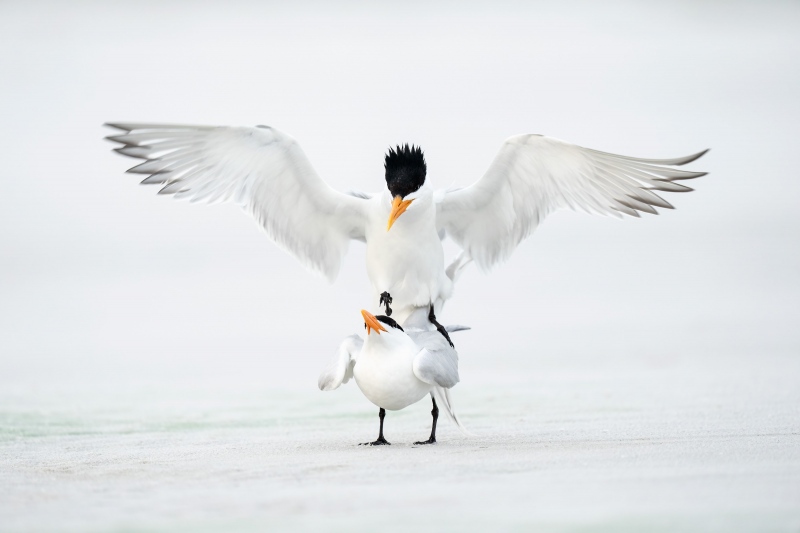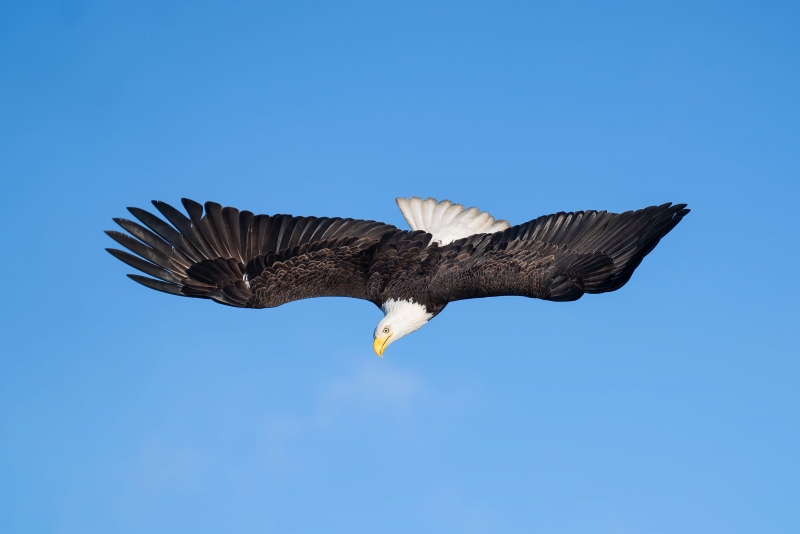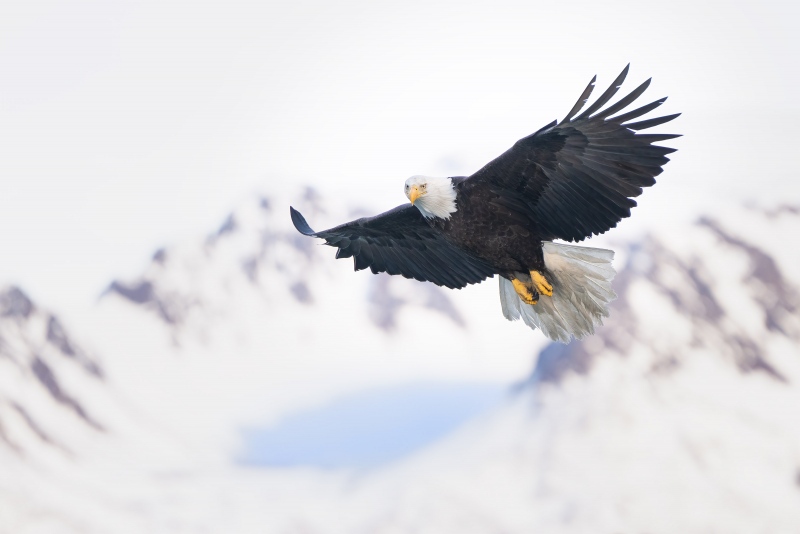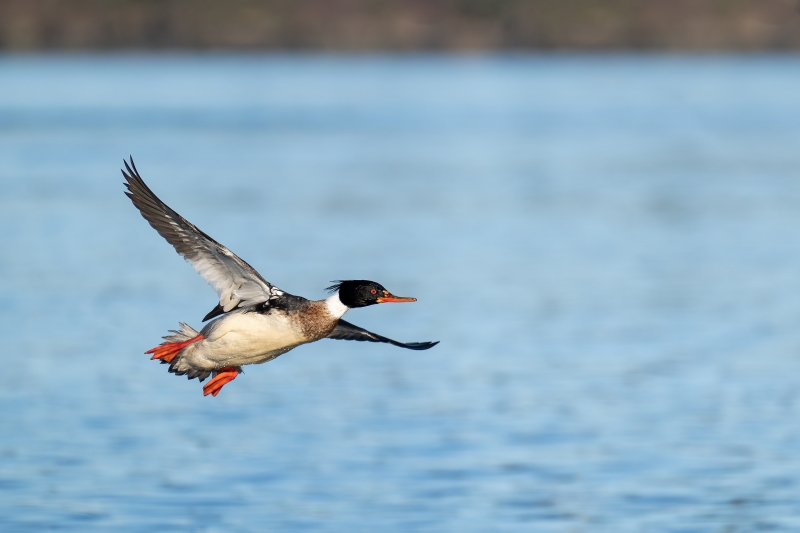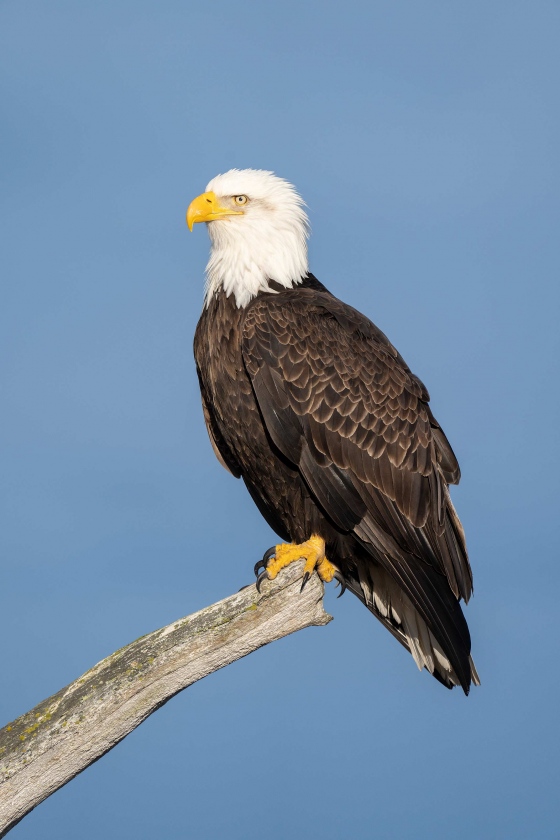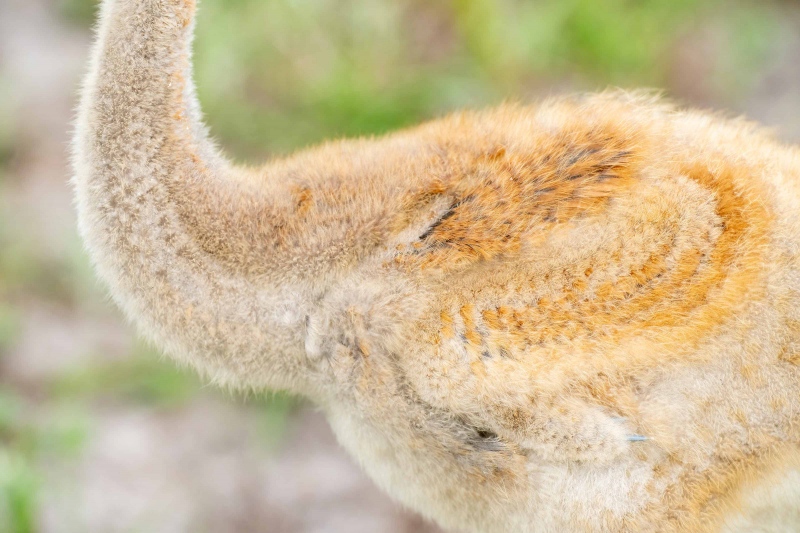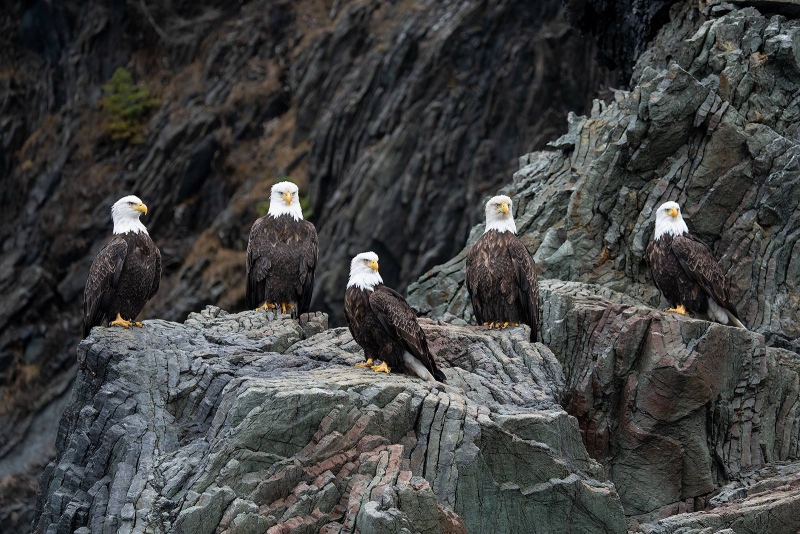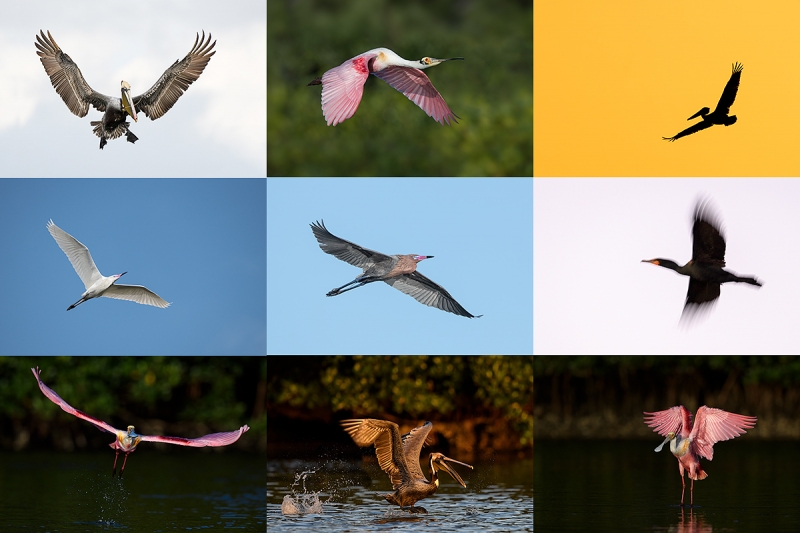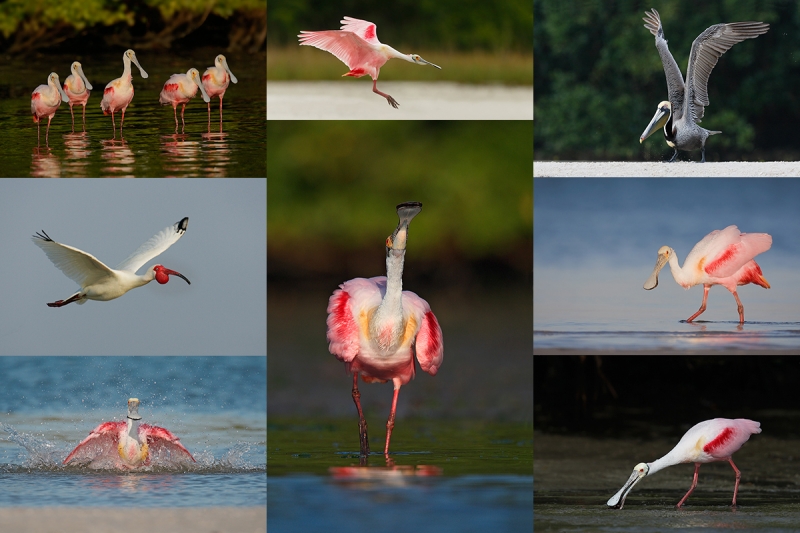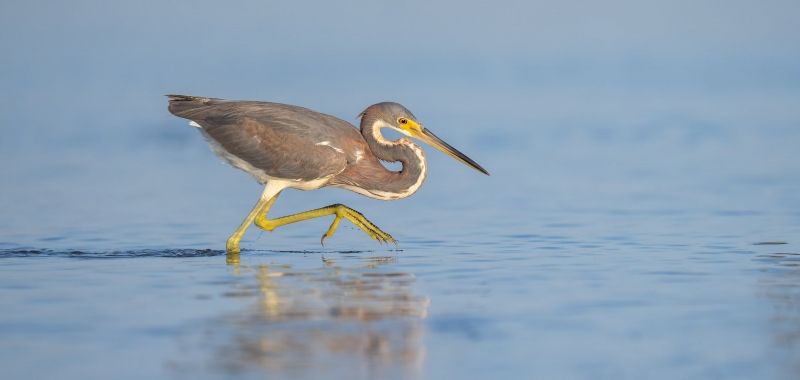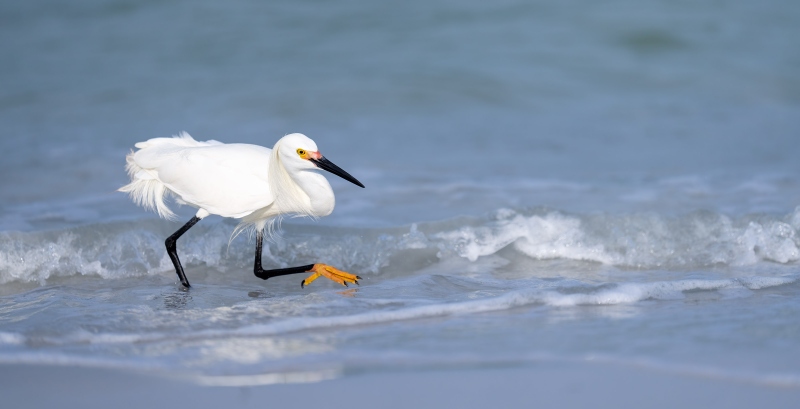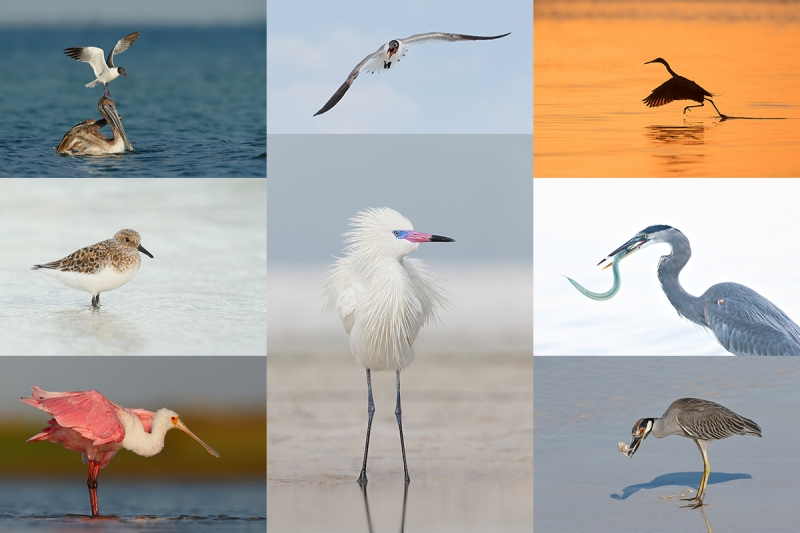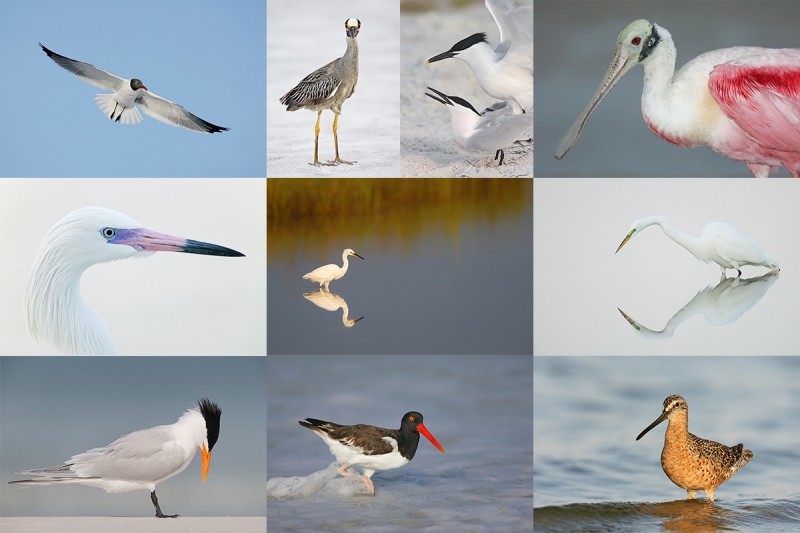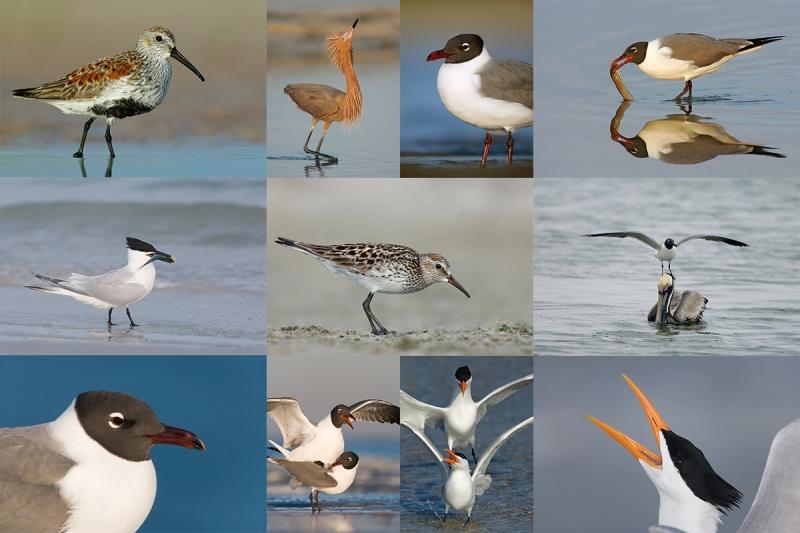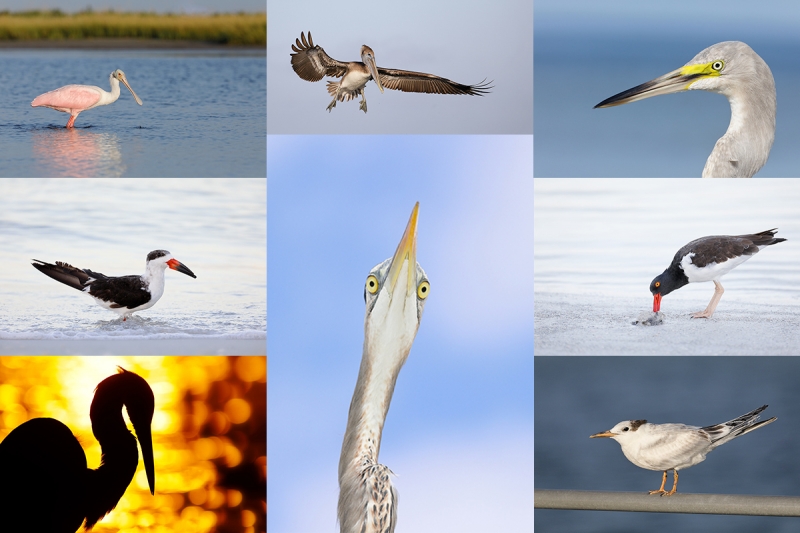March 27th, 2022 The Best?
Of the seven images presented here today, which two are the strongest? Please leave a comment letting us know why you made your choices. I think that most folks will agree on at least one of the images below. I will share my two favorites with you here in the nest Catching Up blog post.
What’s Up?
On Saturday morning I worked here at ILE with Brendan E. Burns. Brendan is joining me for two days on the Hooptie Deux and is signed up for the DeSoto IPT. Brendan looks as if he is about 16 years old. He works as an investment analyst. He is tall and fit. He had been working with some very limited Canon gear when he signed up for the IPT. After a phone consultation, he purchased a Sony a1, the 200-600 G lens, and a 1.4X TC. Then he bought Bill Schneider’s Sony 600mm f/4 lens before it was even listed. So what does he think of Sony? Sony is in a different universe. The autofocus system is beyond amazing. Brendan has been working away from home in an AirBnB in St. Pete and has been photographing at DeSoto most every morning and afternoon. We reviewed some of this recent images. I was beyond impressed. For a relative beginner, his stuff was simply excellent. And best of all, he wants to improve. For me, meeting a bright young man who loves bird photography was an absolute pleasure.
With today’s post, I am almost caught up with unanswered questions past and will do a second post soon that will bring everything up to date.
Today is Sunday 27 March 2022. I am headed to Gatorland for an In-the-Field Session with Nikon shooter Jonathan Hoiles. Wherever you are and whatever you are doing, I hope that you too have a great day. This blog post about two hours to prepare and makes seventeen days in a row with a new one.
Please remember to use the B&H and Amazon links that are found on most blog pages and to use the BIRDSASART discount code at checkout when purchasing your new gear from Bedfords. Please, also, consider joining a BAA IPT. You will be amazed at how much you will learn …
Very Short Notice Hooptie Deux Roseate Spoonbill Opportunities
Morning Roseate Spoonbill Sessions: 7-10am on the boat
Tuesday 29 March 2022: $500 includes the boat fees, waders, and in-the field instruction.
Limit 5, Openings: 1.
Wednesday 30 March 2022: $500 includes the boat fees, waders, and in-the field instruction. Limit 5, Openings: 2..
Do Both Mornings for $950.
Add a working brunch with image review: $125.00.
Add Monday and/or Tuesday afternoon at a nearby wading bird rookery: $150.00.
There are still 3 spots left on the Hooptie Deux spoonbill trips. Please contact me via e-mail to reserve a spot. Payment by cash or check before boarding the boat will be fine.
|
|
|
This image was created on 12 April 2021. While seated on the damp sand, I used the no-longer-available Induro GIT 304L/Levered-Clamp FlexShooter Pro-mounted Sony FE 600mm f/4 GM OSS lens and The One, the Sony Alpha 1 Mirrorless Digital Camera. IS 2000. The exposure was determined via Zebras with ISO on the rear wheel: 1/1000 sec. at f/4 (wide open) in Manual mode. AWB at 7:45:05am on a mostly sunny morning.
Tracking: Zone AF-C performed very well. Be sure to click on the image to enjoy a higher-res version.
Image #1: Royal Tern pair: pre-copulatory stand
|
Surprisingly, the Higher Perspective
In the Royal Terns Screwing Around: Is Lower Always Better? blog post here, I asked of the two featured images, Which is the better perspective?
Somewhat surprisingly, I preferred Image #1, the image made from a higher perspective — seated. I agree that Image #2 is the stronger image overall, but liked seeing the greenish algae stains on the sand in the first image. In addition, I did not like the greenish-gray line going through the birds in the second image.
|
|
|
This image was created on 19 February 2022, the scouting day for the Homer/Kachemak Bay Bald Eagle IPT. I used the hand held Sony FE 70-200mm f/2.8 GM OSS II lens with the Sony FE 1.4x Teleconverter (at 195mm) and The One, the Sony Alpha 1 Mirrorless Digital Camera.. The exposure was determined via Zebras: ISO 400. 1/4000 second at f/4 (wide open). AWB at 11:02:07am on then sunny morning. a somewhat foggy afternoon.
Tracking: Zone AF/C with Bird-Eye/Face Detection performed perfectly. Click on the image to enjoy a high-res version.
Image #2: Bald Eagle beginning dive – B
|
All Razor Sharp. All the Time!
In the All Razor Sharp. All the Time! blog post here, opinions as to which was the strongest image in the series were widely divided. Most folks liked Images #1 and #3. Image #2, which was my favorite, received only two mentions. I liked all three dorsal views, but the upper wings surfaces in the second image were well lit. That was not quite true in the first and the third images.
|
|
|
This image was created on 20 February 2022, the first day of the Homer/Kachemak Bay Bald Eagle IPT. I used the hand held Sony FE 70-200mm f/2.8 GM OSS II lens with the Sony FE 1.4x Teleconverter (at 280mm) and The One, the Sony Alpha 1 Mirrorless Digital Camera.. The exposure was determined via Zebras. ISO 1600. 1/2500 second at f/4 (wide open). AWB at 4:35:37pm on a then-cloudy bright afternoon.
Tracking: Zone AF/C with Bird-Eye/Face Detection performed perfectly. Click on the image to enjoy a high-res version.
Photo courtesy of and copyright 2022: Anita G. North
Image #2: Bald Eagle over mountain II
|
The Eagle-Over-the-Mountain Photo Contest
In the The Eagle-Over-the-Mountain Photo Contest blog post here, a zillion folks commented. Many favored Anita’s fine image; my image got just enough votes to eke our first place. I liked Anita’s image above just a bit better than mine. That said, I love mine. 🙂
|
|
|
This image was created on 28 February 2022, the third day of the second Homer/Kachemak Bay Bald Eagle IPT. I used the hand held Sony FE 70-200mm f/2.8 GM OSS II lens with the Sony FE 1.4x Teleconverter (at 280mm) and The One, the Sony Alpha 1 Mirrorless Digital Camera.. The exposure was set using Zebra technology with ISO on the thumb dial: ISO 640: 1/6400 sec. at f/4 (wide open). AWB at 10:05:40am on a sunny morning.
Tracking: Zone AF/C with Bird-Eye/Face Detection performed perfectly. Click on the image to enjoy a high-res version.
Image #2: Red-breasted Merganser drake in flight
|
|
|
|
This image was created on 26 February 2022, Day One of the second 2022 Homer/Kachemak Bay IPT. Again, I used the hand held Sony FE 200-600mm f/5.6-6.3 G OSS lens (at 600mm), and The One, the Sony Alpha 1 Mirrorless digital camera. ) The exposure was determined using Zebra technology with ISO on the Thumb Dial. ISO 500: 1/1600 second at f/7.1 (stopped down 1/3 stop). AWB at 9:49:17am on a sunny morning.
Tracking: Upper Zone with Bird/Face-Eye Detection performed perfectly. Be sure to click on the image to enjoy a high-res version.
Image #2: Bald Eagle posing on perch
|
Miracle Homer Flight Shots –faster than a speeding bullet!
In the Miracle Homer Flight Shots –faster than a speeding bullet! blog post here, I loved and was amazed by both images, but liked Image #2 (above) best because of the better view of the near underwing. As some suggested, I like the distant background better in Image #1.
Homer YouTube Bald Eagle Video and Announcing the 2023 Homer/Kachemak Bay Bald Eagle IPTs
In the Homer YouTube Bald Eagle Video and Announcing the 2023 Homer/Kachemak Bay Bald Eagle IPTs blog post here, I liked Image #1 but #2, was my favorite. What can I say? I am a sucker for those pure backgrounds and I liked the bird being a bit larger in the frame as well.
My Thoughts on Background Softness (Bokeh?) Simplified
In the My Thoughts on Background Softness (Bokeh?) Simplified blog post here, options on the better background were evenly decided. I agree — I like both equally and could not pick a favorite.
|
|
|
This image was also created on Saturday 12 March 2022, the morning of the day that the colts had vanished. Again I used the hand held Sony FE 70-200mm f/2.8 GM OSS II lens with the Sony FE 2x Teleconverter (at 400mm), and The One, the Sony Alpha 1 Mirrorless Digital Camera.. The exposure was determined using Zebra technology with ISO on the Thumb Dial. ISO 1000: 1/250 second at f/8 (stopped down one stop). AWB at 8:04:45am on a cloudy morning.
Tracking: Zone AF/C with Bird-Eye/Face Detection performed perfectly. Click on the image to enjoy a high-res version.
Image #2: Sandhill Crane colt: folded wing detail
|
In Memoriam: Not! More on the Sony 70-200 f/2.8 II GM
In the In Memoriam: Not! More on the Sony 70-200 f/2.8 II GM blog post here, everyone who commented like Image #1 best. I disagreed. I love, love, love Image #2 above. Why? The delicate,folded, growing wing is framed perfectly. It is hard to believe that in about six weeks the colts will be flying. Despite the extra d-o-f — stopped down one full stop, the background is pleasing (because I was so close to the subject). In addition, I have been trying for this shot for close to two decades. This one is the best by miles!
|
|
|
This image was created on 20 February 2022, day one of the first 2022 Homer/Kachemak Bay IPT. I used the hand held Sony FE 200-600mm f/5.6-6.3 G OSS lens (at 312mm), and The One, the Sony Alpha 1 Mirrorless digital camera. ) The exposure was determined using Zebra technology with ISO on the Thumb Dial. ISO 1600: 1/1000 second at f/6.3 (wide open). AWB at 11:51:21am in the shade on a cloudy-bright day.
Tracking: Spot S with Bird/Face-Eye Detection performed perfectly. Be sure to click on the image to enjoy a high-res version.
Image #2: Five Bald Eagles on radiolarian chert
|
Nine Out of Ten Ain’t Bad. And One Tough Question …
In the Nine Out of Ten Ain’t Bad. And One Tough Question … blog post here, everyone (including me) agreed that Image #2 above, was by far the stronger image.
The nine out of ten referred to nine good head angles in the two photos combined. The eagle on our left in Image #1 is facing away. I also asked a high level image design/field-craft question. I wrote, I really wanted to take one step more up the slope, but refrained from doing so in fear of scaring off one or more to the carefully arranged adult eagles. Why did I want to take one more step up the slope?
Jerry Turner answered correctly when he commented: One more step up the slope up would have raised the horizon above the Eagle’s head on the right in Image 1.. Well done Jerry!
Nancy’s DeSoto IPT Experience
In the Nancy’s DeSoto IPT Experience blog post here, I liked both images with a slight preference for the vertical.All but one of the folks who commented liked the vertical image because the bird is so much larger in the frame. Kudos to Ted Willcox for swimming agains the tide. He wrote: Image #1 is my favourite. I love the composition, and I like the feeling of more room around the bird.
Typos
With all blog posts, feel free to e-mail or to leave a comment regarding any typos or errors.
March 26th, 2022 What’s Up?
On Thursday, a short visit to the lakefront yielded some very nice images of the perched young eagle. Then I watched him soar over ILE like the king of the skies. The crane is still sitting steadfastly on its nest and is usually sound asleep … Again, I made some progress on my two GNPA Keynote programs.
Today is 26 March 2022. The forecast for the morning is dead clear with a gentle NW breeze — not ideal for bird photography but I will head down to the lake at least to check on the 2-egg crane nest. Wherever you are and whatever you are doing, I hope that you too have a great day. This blog post more than less than an hour to prepare and makes sixteen days in a row with a new one.
Please remember to use the B&H and Amazon links that are found on most blog pages and to use the BIRDSASART discount code at checkout when purchasing your new gear from Bedfords. Please, also, consider joining a BAA IPT. You will be amazed at how much you will learn …
Great Canon Stuff at Bedfords
Steve Elkins let me know on Wednesday that Bedfords has a Canon RF400mm f/2.8 lens in stock along with two EOS R3 bodies in stock. If you bite, please remember to use the BIRDSASART code at checkout to earn 3% back on your credit card and free second-day air Fed-Ex.
Selling Your Used Photo Gear Through BIRDS AS ART
Selling your used (or like-new) photo gear through the BAA Blog is a great idea. We charge only a 5% commission on items priced at $1,000 or more. With items less than $1000, there is a $50 flat-fee. One of the more popular used gear for sale sites charged a minimum of 20%. Plus assorted fees! Yikes. They went out of business. And e-Bay fees are now up to 13%. If you are interested, please click here, read everything carefully, and do what it says. To avoid any misunderstandings, please read the whole thing very carefully. If you agree to the terms, please state so clearly via e-mail and include the template or templates, one for each item you wish to sell. Then we can work together to get your stuff priced and listed.
Stuff that is priced fairly — I offer pricing advice only to those who agree to the terms — usually sells in no time flat. Over the past years, we have sold many hundreds of items. Do know that prices for used gear only go in one direction. Down. You can always see the current listings by clicking here or on the Used Photo Gear tab on the orange-yellow menu bar near the top of each blog post page.
Canon EOS-1DX Mark II (with extras!)
BIRDS AS ART Record Low Price
Multiple IPT veteran Jeff Armstrong is offering a Canon EOS-1DX Mark II in mint condition (with less than 3000 shutter actuations) for the BAA record-low price of $2,450.00. The sale includes the front cap, a Ruggard silicone rubber cover that has been on camera from Day One, a Hoodman H-eyec22 eye cup, the strap, the original box, one battery with the end caps, the charger, the instruction manual, and insured ground shipping via major carrier to lower 48 U.S. address. Your item will not ship until your check clears, unless other arrangements are made.
Please contact Jeff e-mail or by phone at 510-604-6100 (Mountain time zone).
The EOS-1DX Mark II was Canon’s flagship professional dSLR for many years. I made many fine images with mine. It is rugged and fast and featured Canon’s best AF system at the time. The 1DX II sells new at B&H for$4,499.00 so you can save a very cool $2049.00 by grabbing Jeff’s pretty much new body ASAP. artie
|
|
|
From left to right clockwise back to the center: Brown Pelican, Roseate Spoonbill downstroke, Brown Pelican sunrise silhouette, Double-crested Cormorant pre-dawn blur, Roseate Spoonbill flapping after bath, Brown Pelican taking flight, Roseate Spoonbill taking flight, Reddish Egret white morph breeding plumage in flight, and Reddish Egret dark morph breeding plumage in flight.
All images on this card were created by me on the Hooptie Deux at Alafia Banks on the 2018 trip. With Captain James “Froggie” Shadle
You can click on each card to enjoy a larger version.
|
Very Short Notice Hooptie Deux Roseate Spoonbill Opportunities
Morning Roseate Spoonbill Sessions: 7-10am on the boat
Tuesday 29 March 2022: $500 includes the boat fees, waders, and in-the field instruction.
Limit 5, Openings: 2.
Wednesday 30 March 2022: $500 includes the boat fees, waders, and in-the field instruction. Limit 5, Openings: 2.
Do Both Mornings for $950.
Add a working brunch with image review: $125.00.
Add Monday and/or Tuesday afternoon at a nearby wading bird rookery: $150.00.
We will be leaving the dock very early for the morning sessions in hopes of photographing the pre-dawn fly-outs and blastoffs of White Ibis and Fish Crow. The weather forecast is perfect for both days. The morning sessions are planned for the Alafia Banks Roseate Spoonbill Rookery. There will be lots of opportunities for flight photography of several species including and especially Roseate Spoonbill. Also likely for flight photography are nesting Brown Pelican, both morphs of Reddish Egret, Great Blue Little Blue, and Tricolored Herons, Great and Snowy Egrets, White and Glossy Ibises, Turkey and Black Vultures, and Double-crested Cormorant. We should have some good chances with birds carrying nesting material. The fee for each session includes all boat and guide fees, in the field instruction and chest waders (feel free to bring your own of course to assure a perfect fit). For the most part we will be standing in mid-calf to knee-high water behind our tripods. Tripod-mounted 500 and 600mm f/4 super-telephoto lenses with a 1.4X TC are best though folks with the Sony 200-600 will do well. We help you get in and out of the boat with your gear. This is likely not the best trip for folks with mobility or balance problems. Note however that some folks opt to stay on the boat to photograph. They usually have lots of chances for flight photography of spoonbills and other species but are almost always pretty far away from the spoonbills that land.
|
|
All images on this card were created by me on the Hooptie Deux at Alafia Banks
|
Everything is Perfect!
These two sessions represent an incredible opportunity to photograph Florida’s most wanted species. I do hope that you can join us. All the images on the cards were made on Hooptie Deux trips from late-February through March, prime time for the spoonies in breeding plumage. Many folks have written expressing interest so please do not tarry.
You must e-mail to reserve a spot. Payment by cash or check before boarding the boat will be fine.
|

|
|
Images courtesy of our guide; copyright 2017 Captain James Shadle (aka Froggie). All the images here were created at Alafia Banks. Card creation and design by Arthur Morris/BIRDS AS ART.
|
Everybody Loves Spoonbills!
Roseate Spoonbill is one of if not the most sought after avian photographic subjects in Florida. They are generally hard to find and somewhat difficult to approach. They are relatively easy to find at Alafia Banks—heck, you can’t miss seeing them, but even there they can on some days be somewhat difficult to approach. On some days we may be able to get ridiculously close to them. The huge incentive to get out to Alafia Banks in mid-February is the chance to photograph this species at the height of its spectacular breeding plumage…. with long telephoto lenses. Again, a 500 or 600mm f/4 lens with a 1.4X TC is perfect for this trip.
Mornings to Alafia Banks for spoonbills and Brown Pelicans (with lots of flight photography often with the birds likely carrying nesting material), Double-crested Cormorants, ibises (both Glossy and White) in breeding plumage. Some of the White Ibises may be sporting their spectacular, distended, red, naked (un-feathered) throat pouches—typically larger in the females. In addition, we may get to photograph egrets including Great and Reddish, both in full breeding plumage, shorebirds, and more. There will be lots of flight photography opportunities.
Typos
With all blog posts, feel free to e-mail or to leave a comment regarding any typos or errors.
March 25th, 2022 The Best?
Which of today’s two featured images do you like best? All are invited to leave a comment and let us know why they made their choice. Be sure to click on each image and view the high-res versions to appreciate the incredible sharpness of a1 images.
What’s Up?
On Wednesday, for the first time in recent memory, I did not get down to the lake at all. I did get lots of work done on my two GNPA Keynote programs.
Today is 25 March 2022. The forecast for the morning is for cloudy early becoming sunny with a gentle NW breeze. I will be headed down to the lake at least to check on the 2-egg crane nest. Wherever you are and whatever you are doing, I hope that you too have a great day. This blog post more than 90 minutes to prepare and makes fifteen days in a row with a new one.
Please remember to use the B&H and Amazon links that are found on most blog pages and to use the BIRDSASART discount code at checkout when purchasing your new gear from Bedfords. Please, also, consider joining a BAA IPT. You will be amazed at how much you will learn …
Great Canon Stuff at Bedfords
Steve Elkins let me know late yesterday that Bedfords has a Canon RF400mm f/2.8 lens in stock along with two EOS R3 bodies in stock. If you bite, please remember to use the BIRDSASART code at checkout to earn 3% back on your credit card and free second-day air Fed-Ex.
And Please Remember
You can find some great photo accessories (and necessities, like surf booties!) on Amazon by clicking on the Stuff tab on the orange/yellow menu bar above. On a related note, it would be extremely helpful if blog-folks who, like me, spend too much money on Amazon, would get in the habit of clicking on the Amazon logo link on the right side of each blog post when they shop online. As you might expect, doing so will not cost you a single penny, but would be appreciated tremendously by yours truly. And doing so works seamlessly with your Amazon Prime account.
Please remember that if an item — a Delkin flash card, or a tripod head — for example, that is available from B&H and/or Bedfords, is also available in the BAA Online Store, it would be great, and greatly appreciated, if you would opt to purchase from us. We will match any price. Please remember also to use my B&H affiliate links or to earn 3% cash back at Bedfords by using the BIRDSASART discount code at checkout for your major gear purchases. Doing either often earns you free guides and/or discounts. And always earns my great appreciation.
Brand-New and As-Good-As-Ever Bedfords BAA Discount Policy
Folks who have fallen in love with Bedfords can now use the BIRDSASART coupon code at checkout to enjoy a post-purchase, 3% off-statement credit (excluding taxes and shipping charges) on orders paid with a credit card. The 3% credit will be refunded to the card you used for your purchase. Be sure, also, to check the box for free shipping to enjoy free Second Day Air Fed-Ex. This offer does not apply to purchases of Classes, Gift Cards, or to any prior purchases.
Money Saving Reminder
Many have learned that if you need a hot photo item that is out of stock at B&H and would like to enjoy getting 3% back on your credit card along with free 2nd Day Air Fed-Ex Air shipping, your best bet is to click here, place an order with Bedfords, and enter the coupon code BIRDSASART at checkout. If an item is out of stock, contact Steve Elkins via e-mail or on his cell phone at (479) 381-2592 (Central time). Be sure to mention the BIRDSASART coupon code and check the box for Free Shipping. That will automatically upgrade to free 2nd Day Air Fed-Ex. Steve has been great at getting folks the hot items that are out of stock at B&H and everywhere else. The waitlists at the big stores can be a year or longer for the hard-to-get items. Steve will surely get you your gear long before that. For the past year, he has been helping BAA Blog folks get their hands on items like the SONY a 1, the SONY 200-600 G OSS lens, the Canon EOS R5, the Canon RF 100-500mm lens, and the Nikon 500mm PF. Steve is personable, helpful, and eager to please.
Important Note
As an Amazon Associate, I earn a small percentage when you purchase from Amazon after using any of the Amazon links on the blog (including the logo-link immediately above). My link works with Amazon Prime and using it will not cost you a single cent. Huge thanks, BTW 🙂
Please Remember Also
Please, if you enjoy and learn from the blog, remember to use one of my two affiliate programs when purchasing new gear. Doing so just might make it possible for me to avoid having to try to get a job as a Walmart greeter and will not cost you a single penny more. And if you use Bedfords and remember to enter the BIRDSASART code at checkout, you will (still!) save 3% on every order and enjoy free second-day air shipping. In these crazy times — I lost about fifty thousand dollars in income due to COVID 19 — remembering to use my B&H link or to shop at Bedfords will help me out a ton and be greatly appreciated. Overseas folks who cannot order from the US because of import fees, duties, and taxes, are invited to help out by clicking here to leave a blog thank you gift if they see fit.


Gear Questions and Advice
Too many folks attending BAA IPTs and dozens of photographers whom I see in the field and on BPN, are–out of ignorance–using the wrong gear, especially when it comes to tripods and more especially, tripod heads… Please know that I am always glad to answer your gear questions via e-mail. If you are desperate, you can try me on my cell at 863-221-2372. Please leave a message and shoot me a text if I do not pick up.
|
|
|
This image was created on 27 May 2021 at Fort DeSoto Park, St. Petersburg, FL. While seated on damp sand, I used the hand held Sony FE 600mm f/4 GM OSS lens and The One, the Sony Alpha 1 Mirrorless Digital Camera. IS 800. The exposure was determined via Zebras with ISO on the rear wheel: 1/4000 sec. at f/4 (wide open) in Manual mode. AWB at 7:27:30am on a hazy, sunny morning.
Tracking: Zone with Bird/Face-Eye Detection performed perfectly. Be sure to click on the image to enjoy a higher-res version.
Image #1: Tricolored Heron hunting
|
Photoshop Crop Tool Basics
Folks often ask if I am wedded to the 3X2 proportions of our images as they come out of Sony, Canon, and Nikon camera bodies. I am not sure why I love the 3X2 proportions (and 2X3 for verticals), but I do. That said, there are times when I prefer crops to other proportions. Those include square crops, boxy crops, and pano crops. In the dropdown Crop menu in Photoshop, there are presets for 1:1 (Square), 4X5 (8X10), 5X7, and others. When you wish to work outside the box as I did with today’s two featured pano crops, or when creating a boxy crop, you need to select the second item in the dropdown menu: W X H X Resolution. Be sure to hit Clear before cropping. Note: you do not have to enter a value in the Resolution box; it will not change if you leave it blank. To set the crop, grab the length and the width love handles (one at a time) and drag them in as needed. You can execute the crop in one of three ways:
- 1- Hit Enter.
- 2- Click on the check mark icon above the image; it is the last one on the right.
- 3- With the cursor anywhere on the image, double-click.
So, What’s a Boxy Crop?
I define a boxy crop as a horizontal image where the proportion is less than 3X2. Both 4X5 and 5X7 are examples of boxy crops, but you do not need to limit yourself to those two. Your images come into Photoshop at 3X2. To create a boxy crop first select the second item in the dropdown menu: W X H X Resolution and then be sure to hit Clear before proceeding. Now grab the love handle on either side of the image and move it in as desired. You can do one or both sides. Now hit Enter. Congrats; you have executed a boxy crop.
|
|
|
This image was created on 12 May 2021 at Fort DeSoto Park, St. Petersburg, FL. While crouching down, I used the hand held Sony FE 600mm f/4 GM OSS lens and The One, the Sony Alpha 1 Mirrorless Digital Camera. IS 400. The exposure was determined via Zebras with ISO on the rear wheel: 1/5000 sec. at f/4 (wide open) in Manual mode. AWB at 8:26:31am on a sunny morning.
Tracking: Zone with Bird/Face-Eye Detection performed perfectly. Be sure to click on the image to enjoy a higher-res version.
Image #2: Snow Egret hunting
|
Wading Birds Fishing: Pano Crops
When actively fishing, wading birds like herons and egrets will often crouch down and lean forward when working the shallows for baitfish. It is natural to work in horizontal format when photographing these fishing birds. And as with today’s two featured images, a pano crop is often the most powerful choice.
Don’t Take This Lightly
Many photo tour leaders are more than glad to get rid of their group at lunch. Each promotion of a BAA IPT includes this:
There will be a Photoshop/image review session after lunch (included) each day.
These sessions are hugely popular. On Day One I will usually pick my keepers from the morning session while explaining the fine differences that make one or two images the best from 5 to 30 frame bursts of the same subject/situation. That is almost always followed by an image optimization or two. Those are recorded and a link to the video is sent to the group.
On the following days, we will look at participants’ images. I will pick a strong one to optimize from the raw conversion to the JPEG creation. And again, the whole process is recorded and a link to the video sent to the group.
These sessions are amazingly valuable, not only for the group but for me as well. Why the latter? Many of my best Photoshop tricks and techniques are a result of someone saying, “Why are you doing it that way? There is a much easier way to do it.”
|
|
|
Fort DeSoto in spring is rife with tame birds, many in full breeding plumage. Click on the composite to enjoy a larger version.
Clockwise from upper left around to center: Laughing Gull landing on head of Brown Pelican, Laughing Gull in flight, Reddish Egret sunrise silhouette, Great Blue Heron with needlefish, Yellow-crowned Night Heron with ghost crab, Roseate Spoonbill, Sanderling in breeding plumage, and white morph Reddish Egret in glorious breeding plumage.
|
The 2022 DeSoto Spring IPT/April 26 through the morning session on April 29, 2020. 3 1/2 DAYS: $2099.00. Limit: 6 photographers/Openings 3.
Fort DeSoto, located just south of St. Petersburg, FL, is a mecca for breeding terns and gulls and wading birds in spring. Migrant shorebirds are in abundance, and many are exceedingly tame. We should have great chances on Royal and Sandwich Terns and both white- and dark-morph Reddish Egrets. Great Egret, Snowy Egret, Great Blue Heron, Tricolored Heron, and White Ibis are easy as well and we will almost surely come up with a tame Yellow-crowned Night-Heron or two along with some American Oystercatchers. We will enjoy lots of great flight photography.
|
|
|
Again, Fort DeSoto in spring is rife with tame birds, most in breeding plumage. Click on the composite to enjoy a larger version.
Clockwise from upper left around to center: Laughing Gull in flight, Yellow-crowned Night-Heron, Sandwich Terns copulating, Roseate Spoonbill, Great Egret with reflection, breeding plumage Short-billed Dowitcher, American Oystercatcher, Royal Tern, white morph Reddish Egret, and Snowy Egret in marsh.
|
We will also get to photograph a variety of other shorebirds including Black-bellied, Semipalmated, Wilson’s, and Piping Plovers, Willet, Dunlin, Short-billed Dowitcher, most especially, Red Knot with many individuals in their handsome breeding plumages. In spring the T-shaped peninsula and the newly formed sandbar, Outback Key, are literally packed with avian treasures. With any luck, we might get to photograph one of Florida’s most desirable species: Roseate Spoonbill. And we will almost surely get to do some Brown Pelican flight photography. With luck, they will have Laughing Gulls landing on their heads. And though not guaranteed, Wood Stork might well be expected. And we will be on the lookout for a migrant passerine fallout in the event of a thunderstorm or two.
|
|
|
Yes, Fort DeSoto in spring is rife with tame birds, most in breeding plumage. Click on the composite to enjoy a larger version.
Clockwise from upper left around to center: breeding plumage Dunlin, dark morph Reddish Egret displaying, Laughing Gull vertical front-end portrait, Laughing Gull with prey item, landing on head of Brown Pelican, breeding plumage Royal Tern displaying, Royal Terns — pre-copulatory stance, Laughing Gulls copulating, Laughing Gull head portrait, breeding plumage Sandwich Tern with fish, and a rare treat, a breeding plumage White-rumped Sandpiper.
|
On the IPT you will learn:
- 1- The basics and fine points of digital exposure; how to get the right exposure every time after making a single test exposure (or before if you are using SONY gear).
- 2- How and why to work in Manual mode (even if you’re scared of it).
- 3- How to approach free and wild birds without disturbing them.
- 4- Lots about bird behavior and how to use that knowledge to help you create better images.
- 5- To age and identify many species of shorebirds including sandpipers, plovers, dowitchers, and possibly yellowlegs.
- 6- To spot good situations and to choose the best perspective.
- 7- To see, evaluate, and understand the light.
- 8- To design pleasing images by mastering your camera’s AF system.
- 9- And perhaps most importantly, to evaluate wind and sky conditions and understand how they affect bird photography.
- 10- How and when to access the magical sandbar safely.
- 11- More than you could ever imagine.
|
|
|
You got it by now! Fort DeSoto in spring is rife with tame birds, most in breeding plumage. Click on the composite to enjoy a larger version.
Clockwise from upper left around to center: Roseate Spoonbill, immature Brown Pelican in flight, the heron/egret hybrid, American Oystercatcher feeding, immature Royal Tern on railing, Great Egret morning silhouette, Black Skimmer in surf, and underside head portrait of Great Blue Heron.
|
Morning sessions will run at least three hours, afternoon sessions 2 1/2. There is never a set schedule on an IPT — we adapt to the conditions. On cloudy mornings when the photography is excellent, we may opt to extend the morning session and skip the afternoon, especially if the afternoon weather is not looking too good. There will be a Photoshop/image review session after lunch (included) each day. That will be followed by Instructor Nap Time. This IPT will run with only a single registrant (though that is not likely to happen). The best airport is Tampa (TPA). Once you register, you will receive an e-mail with lodging information. Do know that it is always best if IPT folks stay in the same general area — Gulfport in this case, rather than at home or at a friend’s place a good distance away.
Folks attending this IPT will be out in the field early and stay late to take advantage of sunrise and sunset colors; this is pretty much a staple on almost all BIRDS AS ART Instructional Photo-Tours. Doing so will often present unique photographic opportunities, opportunities that will be missed by those who need their beauty rest and those who need to get home for a proper dinner. I really love it when I am leaving the beach at 9:30am on a sunny morning after a great session just as a carful or two of well-rested photographers are arriving … We will be getting wet.
Credit cards are OK for your $500 deposit. You can register by calling Jim or Jennifer during weekday business hours at 863-692-0906 with a credit card in hand. After you leave the deposit, you will receive an e-mail with your balance statement and instructions for sending your balance check. If you wish to pay in full right off the bat, you can make your check out to BIRDS AS ART and send it via US mail here: BIRDS AS ART, PO BOX 7245, Indian Lake Estates, FL 33855. You will receive a confirmation e-mail with detailed instructions, and clothing and gear advice a month before the trip. Please shoot me an e-mail if you plan to register or if you have any questions.
Typos
With all blog posts, feel free to e-mail or to leave a comment regarding any typos or errors.
|
|

